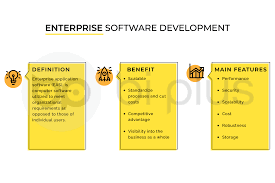Mastering Java for Android App Development: A Comprehensive Guide
The Power of Java in Android App Development
Java has been a dominant player in the world of software development for decades, and its influence extends to the realm of mobile app development, particularly in the Android ecosystem. With its robust features and flexibility, Java has become a go-to language for creating innovative and powerful Android applications.
Why Choose Java for Android App Development?
There are several reasons why Java is highly favored by developers when it comes to building Android apps:
- Platform Independence: Java’s “write once, run anywhere” philosophy allows developers to write code that can be executed on any platform that supports Java.
- Rich Ecosystem: Java boasts a vast ecosystem of libraries, frameworks, and tools that streamline the app development process and enhance functionality.
- Performance: Java’s efficient memory management and high performance make it an ideal choice for creating responsive and fast Android applications.
- Community Support: The large community of Java developers provides a wealth of resources, support, and knowledge sharing opportunities for those working on Android projects.
The Process of Java Android App Development
The process of developing an Android app using Java typically involves the following steps:
- Idea Generation: Define the purpose and features of your app to meet the needs of your target audience.
- Design Phase: Create wireframes, mockups, and UI/UX designs to visualize the app’s layout and user experience.
- Coding: Write code in Java using Android Studio or other integrated development environments (IDEs) to implement the app’s functionality.
- Testing: Conduct thorough testing to identify and fix bugs, ensure compatibility across devices, and optimize performance.
- Deployment: Publish your app on the Google Play Store or other distribution platforms to make it available to users worldwide.
In Conclusion
In conclusion, Java remains a top choice for developers looking to create feature-rich, high-performance Android applications. Its versatility, reliability, and extensive community support make it an indispensable tool in the ever-evolving landscape of mobile app development. By harnessing the power of Java, developers can unlock endless possibilities and bring their innovative ideas to life on the Android platform.
7 Advantages of Java for Android App Development: From Platform Independence to Scalability
- Platform independence allows code to run on multiple devices.
- Rich ecosystem of libraries and frameworks for enhanced functionality.
- High performance and efficient memory management for responsive apps.
- Extensive community support from Java developers worldwide.
- Robust security features to protect user data and app integrity.
- Easy integration with third-party APIs for added functionalities.
- Scalability to accommodate app growth and evolving user needs.
Challenges of Java Android App Development: Navigating Learning Curves, Memory Management, Development Speed, and Performance Optimization
Platform independence allows code to run on multiple devices.
One of the key advantages of Java in Android app development is its platform independence, which enables developers to write code that can be executed on various devices without the need for major modifications. This flexibility not only saves time and effort but also ensures that the app can reach a wider audience by running seamlessly on different platforms, providing a consistent user experience across diverse devices.
Rich ecosystem of libraries and frameworks for enhanced functionality.
Java’s Android app development benefits greatly from its rich ecosystem of libraries and frameworks, which provide developers with a wide array of tools to enhance functionality. These resources not only streamline the development process but also enable the integration of advanced features and capabilities into Android applications. By leveraging the diverse range of libraries and frameworks available in the Java ecosystem, developers can create innovative and robust apps that offer unique user experiences and meet the evolving demands of modern mobile users.
High performance and efficient memory management for responsive apps.
Java’s exceptional performance and efficient memory management are key advantages in Android app development, ensuring the creation of highly responsive applications. By leveraging Java’s capabilities, developers can optimize app performance, minimize resource consumption, and deliver a seamless user experience on a wide range of Android devices. The ability to efficiently manage memory usage allows for faster response times and smoother operation, making Java an ideal choice for building robust and high-performing mobile applications.
Extensive community support from Java developers worldwide.
One significant advantage of Java Android app development is the extensive community support from Java developers worldwide. This vast network of experienced professionals provides a valuable resource for developers, offering assistance, sharing knowledge, and collaborating on projects. With access to forums, online communities, and open-source libraries, developers can leverage the collective expertise of the Java community to overcome challenges, stay updated on best practices, and enhance the quality of their Android applications. This collaborative environment fosters innovation and continuous learning, making Java an ideal choice for those seeking a supportive and thriving developer community.
Robust security features to protect user data and app integrity.
Java in Android app development offers robust security features that play a crucial role in safeguarding user data and ensuring the integrity of the application. With built-in security mechanisms such as sandboxing, encryption capabilities, and secure coding practices, Java empowers developers to create apps that prioritize user privacy and protection. By leveraging these advanced security features, developers can instill trust in their users and mitigate potential risks associated with data breaches or unauthorized access, ultimately enhancing the overall security posture of Android applications developed using Java.
Easy integration with third-party APIs for added functionalities.
One of the key advantages of Java in Android app development is its seamless integration with third-party APIs, allowing developers to easily incorporate additional functionalities into their applications. By leveraging existing APIs, developers can enhance their app’s capabilities without having to build everything from scratch. This flexibility not only saves time and effort but also enables developers to access a wide range of services and features to enrich the user experience.
Scalability to accommodate app growth and evolving user needs.
Java’s scalability in Android app development is a key advantage that allows apps to adapt and expand along with the growth of user demands and changing requirements. With Java’s flexibility and robust architecture, developers can easily scale up their apps to handle increased traffic, incorporate new features, and accommodate evolving user needs without compromising performance or stability. This scalability feature ensures that Android apps built with Java can grow seamlessly alongside the expanding user base and ever-changing market dynamics.
Steep Learning Curve
Java Android app development comes with its challenges, one of which is the steep learning curve associated with Java programming. For beginners, Java’s complexity can be overwhelming, demanding significant time and effort to grasp its intricate concepts and adhere to best practices. Navigating through the nuances of Java development may pose a hurdle for newcomers, but with dedication and perseverance, developers can overcome this obstacle and unlock the full potential of creating robust and innovative Android applications.
Memory Management
Memory management in Java Android app development can be a significant challenge for developers as they are required to handle it manually. This aspect of Java development can result in potential memory leaks and performance issues if not managed effectively. The responsibility of allocating and releasing memory falls on the developer, making it crucial to implement proper memory management techniques to ensure optimal app performance and stability. Failure to address memory management issues in Java can lead to inefficient resource usage and ultimately impact the overall user experience of the Android application.
Slower Development Time
One significant drawback of Java Android app development is the slower development time it may entail. Writing code in Java can be more time-consuming compared to using other programming languages, which could potentially hinder the speed of the app development process. This extended timeframe required for coding in Java may result in delays in delivering the final product to users, impacting time-to-market and overall project timelines. Developers need to carefully consider this con and explore strategies to mitigate its effects to ensure efficient and timely delivery of high-quality Android applications.
Limited Performance Optimization
In the realm of Java Android app development, a notable drawback is the limitation in performance optimization. While Java inherently provides decent performance capabilities, reaching the pinnacle of speed and efficiency often demands the utilization of more advanced optimization techniques. Developers may encounter challenges in fine-tuning their apps to deliver optimal performance, requiring a deeper understanding of Java’s intricacies and implementation of sophisticated optimization strategies to overcome this con effectively.





